- Home
- Patricia Cornwell
The Bone Bed Page 11
The Bone Bed Read online
Page 11
“Pam says leatherbacks are the last living dinosaur on earth.” Marino takes the left turn that leads to our back parking lot.
“The problem is if you say things like that, some moron is going to set out in search of it as if it’s Nessie or Bigfoot.”
“I’d rather work with Jefferson at Boston P.D.,” Marino then says, as if it’s up to him to pick a homicide detective and sidestep what I have a feeling will end up being the FBI. “Technically, the outer harbor is Boston.”
“I’m not sure of that at all,” I reply. “It depends on the latitude and longitude, and I don’t know enough about navigation to tell from the coordinates we got whether the water she was recovered from might be within the seaward boundary of Hull, Cohasset, or even Quincy. Add to that the question of where she went in and also where she died, where she was abducted from, assuming she was abducted. It probably will end up being FBI, no invitation needed.”
“They’ll sink their teeth into it like a damn pit bull and take over the investigation on prime time.” He reaches up to the visor and presses the remote control that opens our gate. “I’m sure Benton will love getting his hands on this one,” he adds, as if my FBI criminal intelligence analyst husband leads a sheltered life.
“Nobody wants something like this,” I reply, as the gate slides open. “That’s my bigger worry. That everyone will treat it like a hot potato. But more important than any of this is what we can do to establish her identity as quickly as possible. We need to enter a physical description of her and her personal effects into NamUs.”
The National Missing and Unidentified Persons System is a relatively new central database for people who have vanished. It’s a chance at least to connect the missing with the unidentified or unclaimed dead, but again, I have a strong feeling this woman’s disappearance hasn’t been reported.
“No matter what, we’ll do that before the day’s end. We’ll want to e-mail radiographs, her dental charts, any distinct body features,” I continue going down the list as we drive into the back lot. “Put in a call to Ned or whoever might be available later this afternoon.”
Ned Adams is one of several area dentists also certified in odontology and on call for us.
“We need to get some pictures before court.” Marino parks the Tahoe in front of the bay.
“Absolutely.” I reach down to pick up the trash bag of my wet field clothes.
“And her temp, since we didn’t do that on the boat,” he says. “Probably the same as the bay, fifty-one degrees. Maybe one or two degrees higher, because the Coast Guard boat and back of the van will be warmer than the water.”
“Yes, we’ll get it now, and then I need a few minutes to change back into my suit. I sure can’t go like this.” I climb out clad in the gray fleece liner, my orange down coat, and wet boots with no socks.
“Not unless you want everyone to think you’re a whack job,” Marino says, as the bay door begins to clatter up, the white windowless van stopping in front of it.
“We need photos, and most of all, swabs, because the quicker we can get her DNA profile in NamUs and especially NDIS, the better.” I continue going through what needs to be done immediately.
“PERK her, clean up really fast, and get to court.” I hold on to a thread of hope that law enforcement somewhere has entered this missing woman into the National DNA Index System.
“Tell Bryce to contact Dan and let him know we just got back from a difficult scene and I’m hurrying as fast as I can. Damn waste,” I then mutter. “Ridiculous. Pure harassment. Unadulterated effort to interfere and create a spectacle.”
“Yeah, you’ve only said it fifty times.” Marino grabs the scene cases out of the back of the SUV, and I gather the evidence bags of the fishing gear Pamela Quick gave to me and the barnacle I extracted from the leatherback.
We walk into the bay, the van rumbling in behind us and parking. The driver’s door swings open, and Toby hops out in his investigative uniform, a baseball cap pulled over his shaved head, a fad I’m sure Marino started, and it never fails to amaze me the influence he has without seeming to be aware of it. At least half of my male investigators now shave their heads as glossy smooth as cue balls and have got tattoos, including Toby, whose left arm is a solid sleeve of what reminds me of subway graffiti.
No one is immune to the Marino effect, as I’ve come to call the need his investigators have to emulate him for better or worse. I’m told that Sherry’s gotten Mortui vivos docent tattooed on her back and has taken up boxing, and Barbara now rides a Harley.
“What’s the plan?” Toby pulls on gloves and opens the tailgate. “You want her in decomp? I assume she’s a homicide, probably dead first and dumped so she would sink, right? Really weird shit. Any idea who she is?”
“We need a few minutes with her before she goes into the cooler, and don’t assume nothing,” Marino says gruffly.
“You’ll do her in the morning?”
“I’m definitely not waiting until the morning,” I answer him. “As soon as I’m out of court I’m back here. She’s going to be in bad shape very fast. Let’s bring her straight into decomp, and we’ll get a temperature and some photos. We can weigh and measure her later.”
Toby unlocks the wheels of the stretcher with its black body bag that looks oversized and pitifully flat, as if what’s zipped inside has shrunk in transit.
“What about the other stuff?” he asks.
In the back of the cargo area are the black plastic–covered shapes of what was recovered from the bay.
“All of it will go to trace, but not now,” I tell him. “Let’s get everything inside ID.”
I instruct him to cover a table with disposable sheets and place all of the items inside, and to document them with photographs and lock the door. When I’m back from court I’ll remove the wrappings, take a look and find out what interest or questions the police or FBI might have in the fishing gear, the boat fender, and all the rest. We’ll submit all this to trace evidence first thing tomorrow morning, I tell Toby, and I ask him to give Ernie Koppel, the section chief, a heads-up about what’s coming.
“Everything locked up tight and secured,” I repeat. “Nobody’s to touch anything without clearing it with me first.”
They lift the stretcher out, slam shut the tailgate, and roll the body inside and toward the decomp room as the bay door begins to loudly crank back down. I stop by the security guard’s window and check the sign-in log again, relieved that no other cases have come in since I last looked. The two motor-vehicle fatalities have been autopsied, their bodies picked up by funeral homes. That leaves the blunt-force trauma and possible drug overdose suicide to be released. Luke Zenner did those autopsies, I notice, and that’s what I’ve come to expect. It’s his nature to request the most complicated cases or assign them to himself because he wants experience and loves a challenge.
“Is there anything I need to know about?” I ask Ron, through his open window.
“No, ma’am, Chief,” he answers from inside his office, where security monitors mounted on three walls are split into quadrants, each showing exterior and interior areas of special interest for surveillance. “It’s been real quiet. Just two pickups, with another on the way.”
“We’ll be in decomp for a few minutes, then I’ve got court,” I let him know. “Hopefully they won’t hold me up too long. Marino and I will be coming straight back here to take care of this post.”
“You going to do her today?” he says, to my surprise.
I haven’t mentioned or indicated to him or anyone in my building that the victim in this case is a woman. Only Marino and Toby know.
“Yes. No matter how late it is,” I reply, as I fill in the log. “Since we don’t know who she is, let’s enter her as an unidentified white female found in the Massachusetts Bay.”
He begins typing into fields of a software package that programs a Radio Frequency Identification, or RFID, chip embedded in a smart label. Checking scene notes for the GPS coordin
ates, I give those to him, too, as Toby reappears, pushing an empty gurney in a hurry and loudly shoving open the door that leads out of the autopsy floor and into the bay. A laser printer sounds, and Ron slides out a yellow silicone bracelet and the smart label embedded with the information I just gave him about our most recently accessioned case.
“What have you been hearing?” I question him casually, as security cameras pick up Toby rolling the gurney toward the white transport van.
“Well, Toby said we have a Jane Doe coming in, that it could be the lady who’s been missing, the one you’re going to court about,” Ron says. “I guess you also were filmed by some TV crews while you were out there.”
“What makes you think it was TV crews, as in more than one?” I ask while I watch Toby from different angles on split screens.
He parks the gurney at the back of the van, points the key to unlock it, and I notice his lips are moving. It occurs to me he’s probably listening to his iPod as usual and singing along. But that’s not right, either. He appears to be talking emphatically. In fact, he looks agitated, as if he’s arguing with someone.
“From what I saw, you were in different locations, on different boats, at different times,” Ron describes. “The Coast Guard, the fireboat with a bunch of people from the aquarium. Some of it was filmed from the air. I do know that because you could hear the chopper in the background. But I’m not sure about all of it.”
Toby is on the phone. He’s wearing in-ear headphones that are connected to his iPhone, which is in a back pocket of his cargo pants. Maybe he’s fighting with his girlfriend again, and he shouldn’t be fighting with anyone or having any sort of personal conversation, period. He should be paying attention to his job, to his handling of evidence. It’s one of my most common complaints that staff devote just as much time to their personal lives as they do to their work, as if it’s perfectly fine to get paid for fighting with a partner or shopping online or chatting on Facebook or Twitter.
“You were doing something with what’s for sure the biggest turtle I ever saw,” Ron continues, and I’m barely listening. “Then you’re in the water getting her out. An old lady, it looks like, tied up with yellow rope.”
“You saw footage of me getting her out of the water?” I watch Toby cover the gurney with the sheet and open the tailgate, and he’s scowling now, clearly unhappy with whatever someone is saying over the phone. “Do you happen to know which TV station it was?”
“No, ma’am, Chief. That I can’t tell you for a fact,” Ron says. “Because it’s not just on the local stations. CNN, for sure, and a Yahoo headline on the Internet about a prehistoric monster turtle, and that’s the exact words, and a dead body tied to a cage that the turtle got tangled up with. I think it’s pretty much all over the Internet, pretty much everywhere.”
thirteen
THE CFC’S SEVEN CORRIDORS ARE PAINTED WHITE, their recycled glass tiles glazed a grayish brown called truffle. Soft reflective LEDs create a soothing cloud of light, and acoustical drop ceilings conceal miles of wire while cameras and RFID trackers monitor the passage of all who come here, the living and the dead.
Our round headquarters was built by a bioresearch company that went bankrupt late in construction, and with rare exception the original design is ideal for what we do—in fact, a medical examiner’s dream. We can look out energy-efficient solar windows that no one can look in, and a high-performance HVAC controls the environment so precisely we have our own customized weather. Boilers remove moisture from the air before chillers cool it, preventing condensation and an inconvenient phenomenon known as indoor rain, while robots and HEPA filters suck in and scrub away pathogens, chemical vapors, and accompanying awful odors.
The CFC is cleaner than most healthcare clinics, the tissue recovery room I briskly walk past a hundred times more sterile than a hospital OR. Patients declared brain-dead can be transported here while still on life support, ensuring that eyes, organs, skin, and bones are harvested without wasteful delays, the dead helping the living and the living helping the dead. The progress I’ve witnessed in my profession isn’t the straight trajectory I once imagined but a circle like the corridor I follow, passing ID now, then ducking inside large-scale x-ray to see if my technician Anne is there.
Her chair is pushed back and turned around as if she just got up, and glowing on flat video screens are 3-D images of a head and thorax with bright white areas of fresh hemorrhage into brain tissue and lungs, and the brighter white of bones, of a basilar skull fracture that extends into the sinuses, and shattered scapulas, and ribs broken so badly they’re detached from chest walls. The blunt-force trauma case from this morning, Howard Roth; I read the information on his CT scans. A forty-two-year-old black male from Cambridge who allegedly fell down his basement stairs, his body discovered late yesterday afternoon.
I don’t have time for this.
But I can’t let it go, and I click through more images, viewing the body on different planes from the inside out, and the gray shades of organs and muscles are vivid white where there is bleeding and dark where air is trapped. Then brilliant starburst and streaking artifacts are at a high Hounsfield unit value of almost 4000. Dense metal, possibly lead. Most likely old bullet fragments in the soft tissue of the left hip, and more of them in his right posterior thigh. A possible roadmap of the life this man lived, but not what killed him, and the massive internal damage that did is grossly inconsistent with a tumble down the stairs.
A flail chest is more common in the crushing injuries I associate with people pinned under machines or run over by tractors or cars. Most people who fall on the back of their heads also don’t have a basilar fracture. They don’t have broken cranial bones at foramen magnum, the hole in the base of the skull. I click through more images from the whole-body scan, finding no fresh injuries to the arms, hands, pelvis, or lower extremities.
Beyond a leaded glass window, the silhouette of the large bore CT scanner is indistinctly white in the near dark, no one home, and I decide Anne probably stepped out for coffee or to use the ladies’ room. I jot her a note and place it on her keyboard, letting her know I plan to post the body from the Massachusetts Bay later in the day and will need to scan it first.
Should discuss Howard Roth, I add as a PS. Confusing loc of fxx/injuries & lack of them. Need complete history & scene details. Do not want him released yet. Thx.—KS.
I check the autopsy room next and find it quiet and shiny clean, the floor still damp from mopping, long rows of empty steel tables gleaming dully in natural light that filters in through the one-way glass of side windows and those facing the parking lot. Banks of high-intensity lamps in the thirty-two-foot ceiling are turned off, the observation windows in the upper walls opening onto teaching labs that are dim and empty.
Luke Zenner often lingers down here, enjoying the quiet to do paperwork, to check on pending projects, or to tidy up his station, number 2, right next to mine. But I don’t see him or anyone else, my five other pathologists and team of investigators probably in their offices or taking care of various appointments or out on calls.
I enter my iPhone’s password to send Luke a message and notice I have a new one from Benton.
We still on for 5 & you ok? Have seen the news.
I write him back that I will return directly to the CFC after court and probably work into the early evening. I can meet with him and the other agents as soon as I’m done with the post.
Will call when I get a breath, I text him. Dinner? If really late, take-out here while we meet?
My phone immediately chimes and he replies, Will pick up Armando’s.
I answer, Combos with xtra cheese, fresh tomato, peppers, onions. On 1 of them add spinach & artichoke hearts. Say they R for me. I tell him I look forward to seeing him.
It will feel reassuring when Benton appears, when the rest of this afternoon is behind me, and I glance at my watch. It’s twenty-eight minutes past one, and I text Luke about the Howard Roth case, letting him know
we need to discuss it and not to release the body yet. I should be back in a few hours, I type, as I move on past the soiled room, the anteroom, the changing rooms and locker rooms, no sign of Luke or anyone, which is typical at this hour, unless we have an unusually heavy caseload.
Beyond anthropology the corridor bends around to the Bio4 containment lab, or what we informally refer to as decomp, reserved for suspected infectious or contaminated or badly decomposed bodies. Pushing a hands-free button that automatically opens a metal door, I walk into an air-locked vestibule and hang up my coat. Grabbing protective clothing off shelves, I push a second button that opens a second door and find Marino covered from the neck down in white Tyvek, checking his camera equipment.
The stretcher bearing the black pouch is parked next to one of three stainless-steel tables attached to wall sinks, and above them observation windows are dark. A clock mounted next to the walk-in cooler reminds me unpleasantly that it’s now one-thirty. I’m supposed to be in court in exactly half an hour, and I continue to hope, at this point rather ridiculously, that I’ll be canceled at the last minute. Or perhaps the trial is running behind schedule and the judge will understand that I am, too.
“Was afraid you got lost,” Marino says, as he covers his bald head with a designer surgical cap, this one a medicine skull that he ties in back like a biker’s do-rag.
“We’ve got a problem case maybe.”
“Not another one.”
“The man who supposedly fell down the stairs,” I explain. “It doesn’t look like a fall to me, unless he went off a ten-story building and hit a few things on the way down. Toby took that call, I believe?”
“He went to the scene and said there was nothing to it.”
I lean against a counter and pull shoe covers over my wet boots.
“Do you know the details?” I ask.
“It’s Machado’s case.”
“Did he attend the autopsy this morning?” I inquire.

 Blow Fly
Blow Fly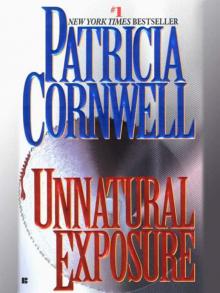 Unnatural Exposure
Unnatural Exposure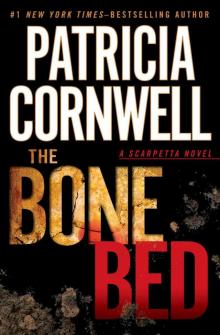 The Bone Bed
The Bone Bed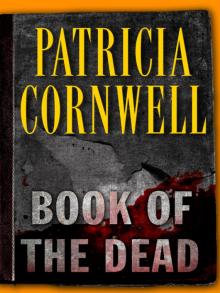 Book of the Dead
Book of the Dead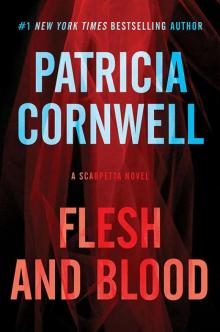 Flesh and Blood: A Scarpetta Novel (Scarpetta Novels Book 22)
Flesh and Blood: A Scarpetta Novel (Scarpetta Novels Book 22)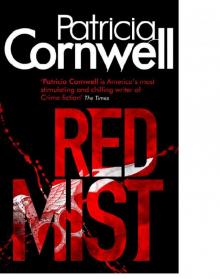 Red Mist
Red Mist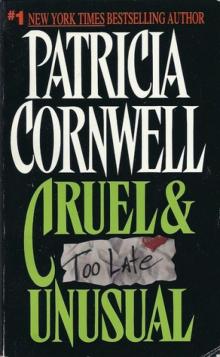 Cruel & Unusual
Cruel & Unusual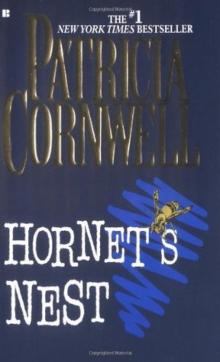 Hornet's Nest
Hornet's Nest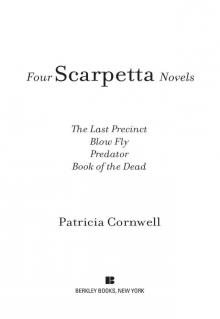 Four Scarpetta Novels
Four Scarpetta Novels Scarpetta's Winter Table
Scarpetta's Winter Table Isle of Dogs
Isle of Dogs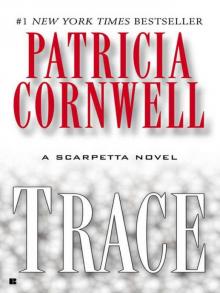 Trace
Trace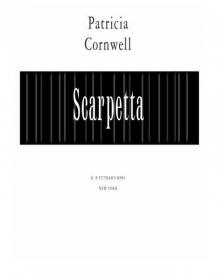 Postmortem
Postmortem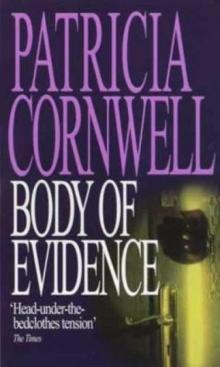 Body of Evidence ks-2
Body of Evidence ks-2 Southern Cross
Southern Cross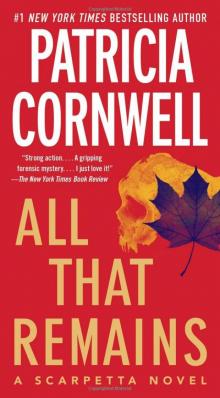 All That Remains
All That Remains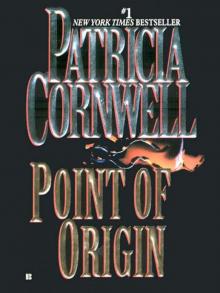 Point of Origin
Point of Origin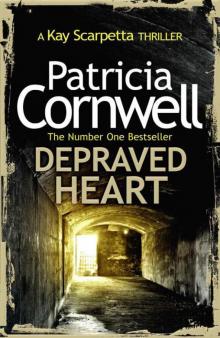 Depraved Heart
Depraved Heart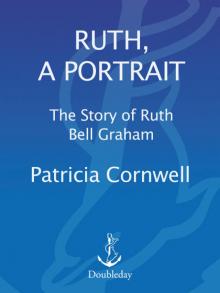 Ruth, a Portrait: The Story of Ruth Bell Graham
Ruth, a Portrait: The Story of Ruth Bell Graham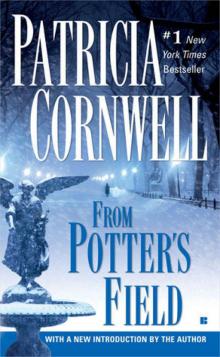 From Potter's Field
From Potter's Field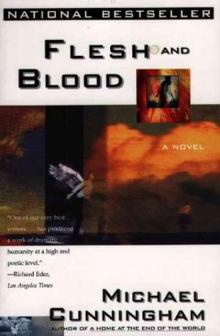 Flesh and Blood
Flesh and Blood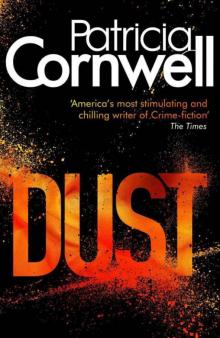 Dust
Dust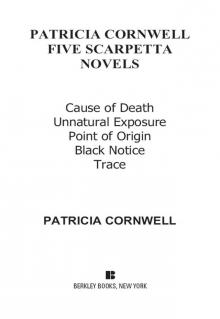 The Body Farm
The Body Farm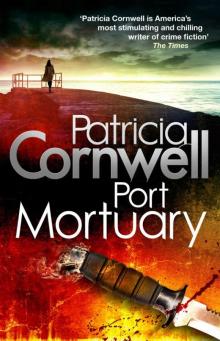 Port Mortuary
Port Mortuary Quantum
Quantum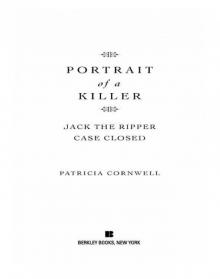 Portrait of a Killer: Jack the Ripper - Case Closed
Portrait of a Killer: Jack the Ripper - Case Closed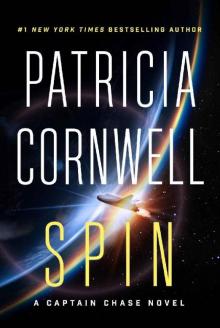 Spin (Captain Chase)
Spin (Captain Chase)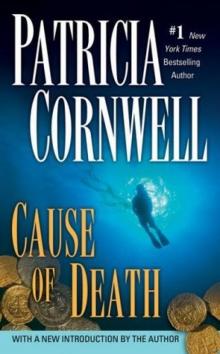 Cause of Death
Cause of Death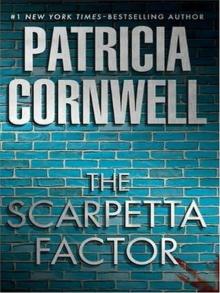 The Scarpetta Factor
The Scarpetta Factor Predator
Predator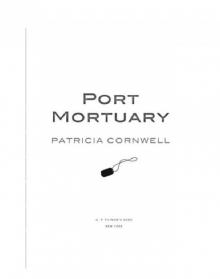 Scarpetta 18 - Port Mortuary
Scarpetta 18 - Port Mortuary Trace ks-13
Trace ks-13 Portrait of a Killer
Portrait of a Killer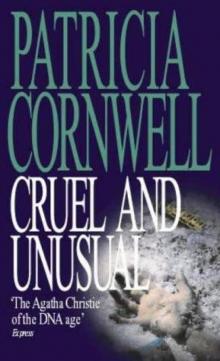 Cruel and Unusual ks-4
Cruel and Unusual ks-4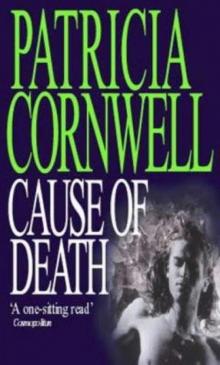 Cause Of Death ks-7
Cause Of Death ks-7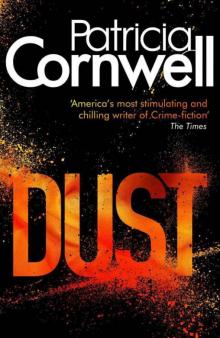 Dust ks-21
Dust ks-21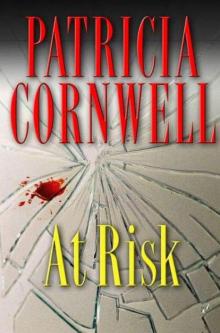 At Risk wg-1
At Risk wg-1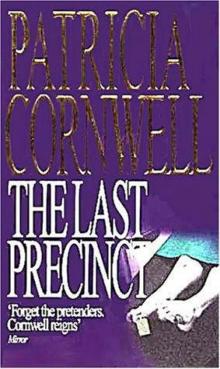 The Last Precinct ks-11
The Last Precinct ks-11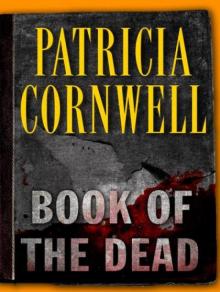 Book of the Dead ks-15
Book of the Dead ks-15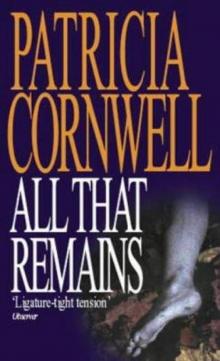 All That Remains ks-3
All That Remains ks-3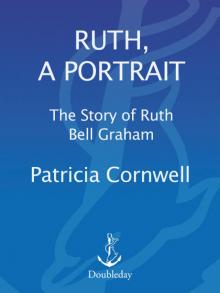 Ruth, a Portrait
Ruth, a Portrait Scarpetta's Winter Table (kay scarpetta)
Scarpetta's Winter Table (kay scarpetta)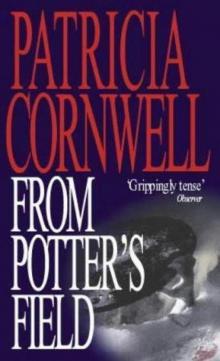 From Potter's Field ks-6
From Potter's Field ks-6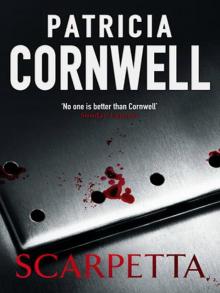 Scarpetta
Scarpetta Isle of Dogs jhabavw-3
Isle of Dogs jhabavw-3 Hornet's Nest jhabavw-1
Hornet's Nest jhabavw-1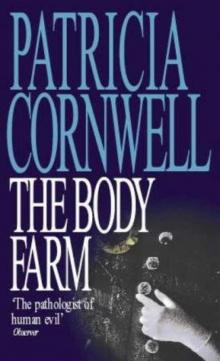 The Body Farm ks-5
The Body Farm ks-5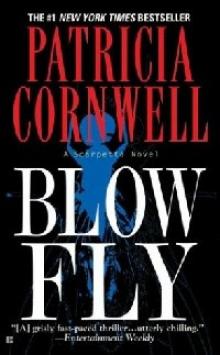 Blow Fly ks-12
Blow Fly ks-12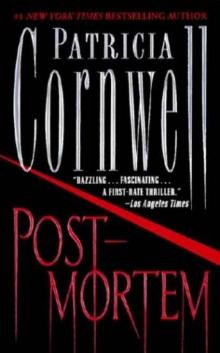 Post Mortem
Post Mortem Five Scarpetta Novels
Five Scarpetta Novels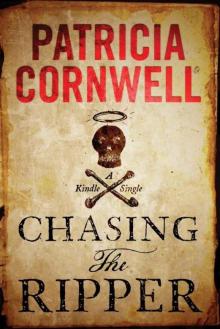 Chasing the Ripper (Kindle Single)
Chasing the Ripper (Kindle Single)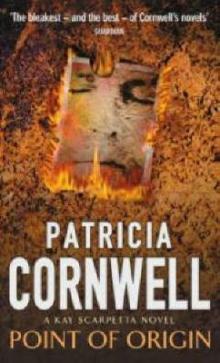 Point of Origin ks-9
Point of Origin ks-9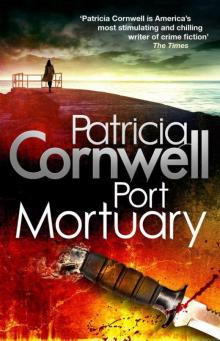 Port Mortuary (2010)
Port Mortuary (2010)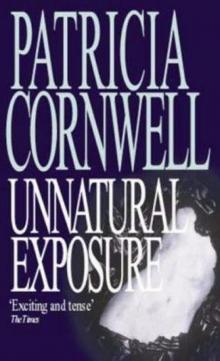 Unnatural Exposure ks-8
Unnatural Exposure ks-8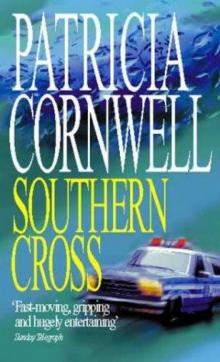 Southern Cross uhabavw-2
Southern Cross uhabavw-2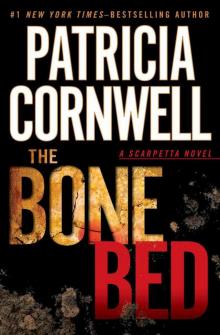 The Bone Bed ks-20
The Bone Bed ks-20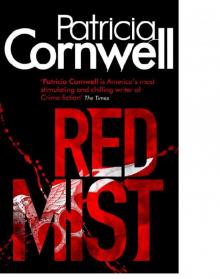 Red Mist ks-19
Red Mist ks-19 Port Mortuary (2010) ks-18
Port Mortuary (2010) ks-18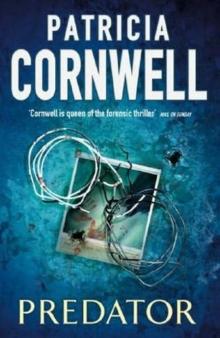 Predator ks-14
Predator ks-14